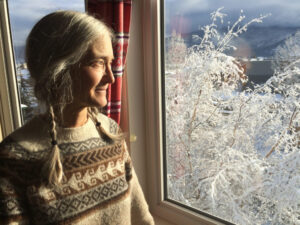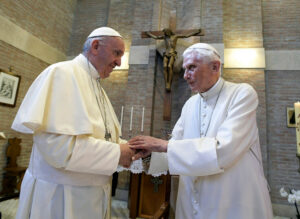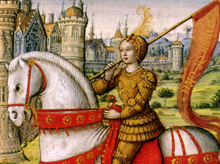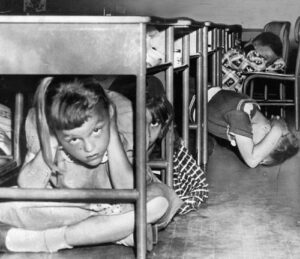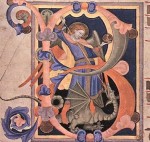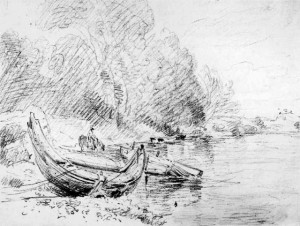

ALAN writes:
Eleven years ago, I wrote about the abandonment of the Cleveland High School building in south St. Louis. [“The Tale of One High School”, The Thinking Housewife, Jan. 18, 2012] It was a public high school. It has stood there for more than a hundred years, closed and abandoned since 2006. Its huge size and architectural design and craftsmanship create the impression of a castle. That—“The Castle”—is precisely what it was called and how it is remembered by generations of students who got a decent education there.
These two pictures appeared last week on a public Facebook page about St. Louis History. They show the school’s auditorium and stage as they look today, replete with advanced deterioration and vandalism. I give credit where credit is due: Such things are a credit to the hard work, professional dedication, and inestimable moral fiber of the St. Louis Board of Education and municipal government. (More on that subject below.)![]()
I sat in this very auditorium on many days in 1966-’67. I sat there during the week in January 1967 when three American astronauts died in a fire at Cape Kennedy. During the lunch hour, the cliques and the in-crowd always congregated down front near the stage and whooped it up. That was why I always selected a seat in the outer row and near the back of the auditorium, just outside the view in these pictures. I was not part of any in-crowd. I tried to get as far away from them as I could in order to be able to read in what little quiet I could find.
I distinctly remember sitting there during the noon hour and reading books about aviation and science (books of my own choosing, not schoolbooks). Pilot Dale Titler’s Wings of Mystery: True Stories of Aviation History was one of them. I sent him a letter to express my appreciation for his book. He replied, and then we exchanged a few more letters.
Imagine living down the street today from a huge building boarded-up and in this condition. When we were in parochial school in the late 1950s-early ‘60s, my classmate and boyhood best friend Jeff’s family lived across the street from Cleveland High. He and I walked past it countless times. We never paid any attention to it because it was just there. There was nothing about it that compelled our attention. In a neighborhood and at a time when men and women accepted their responsibilities instead of rejecting or evading them, it was an ordinary high school. It did not stand out. The men (not feminists) who ran it kept it clean and functional, as did those who worked in it.
Students were encouraged to take part in after-school activities and they did. A variety of clubs for students endured for decades.
In a 2009 article about such clubs, historian NiNi Harris wrote:
“Two of the after school clubs—the Radio Club and the Rifle Club—are almost inconceivable in today’s climate”.
[“After School at the Castle”, Carondelet Historical Society Newsletter, Winter 2009, p. 4]
That seems a fair statement. But “today’s climate” would seem inconceivable to Cleveland students and teachers in the 1950s. Nor could they have imagined a School Board so stupid, so unaccountable, or so incompetent as to permit their school to deteriorate into the abomination shown in the two pictures above, or a city of taxpayers who would permit them to do that, or a city whose “law enforcement” and courts are so bent-over-backward lenient as to reward criminals and impel tens of thousands of law-abiding residents to move away as fast as they can.
In the Rifle Clubs, students (i.e., white boys and girls) used rifles to practice marksmanship in the basement. But neither they nor those evil guns left it looking as it does in those pictures.

For contrast, see the photo below that appeared in the 1964 yearbook. It is the same stage in the same auditorium.

1957 Cleveland High School yearbook
The Cleveland building does not stand out today, either — because buildings like it have become an ordinary sight in a neighborhood infested with crime in a city that is now in free-fall because of corrupt and wholly unaccountable city government.


